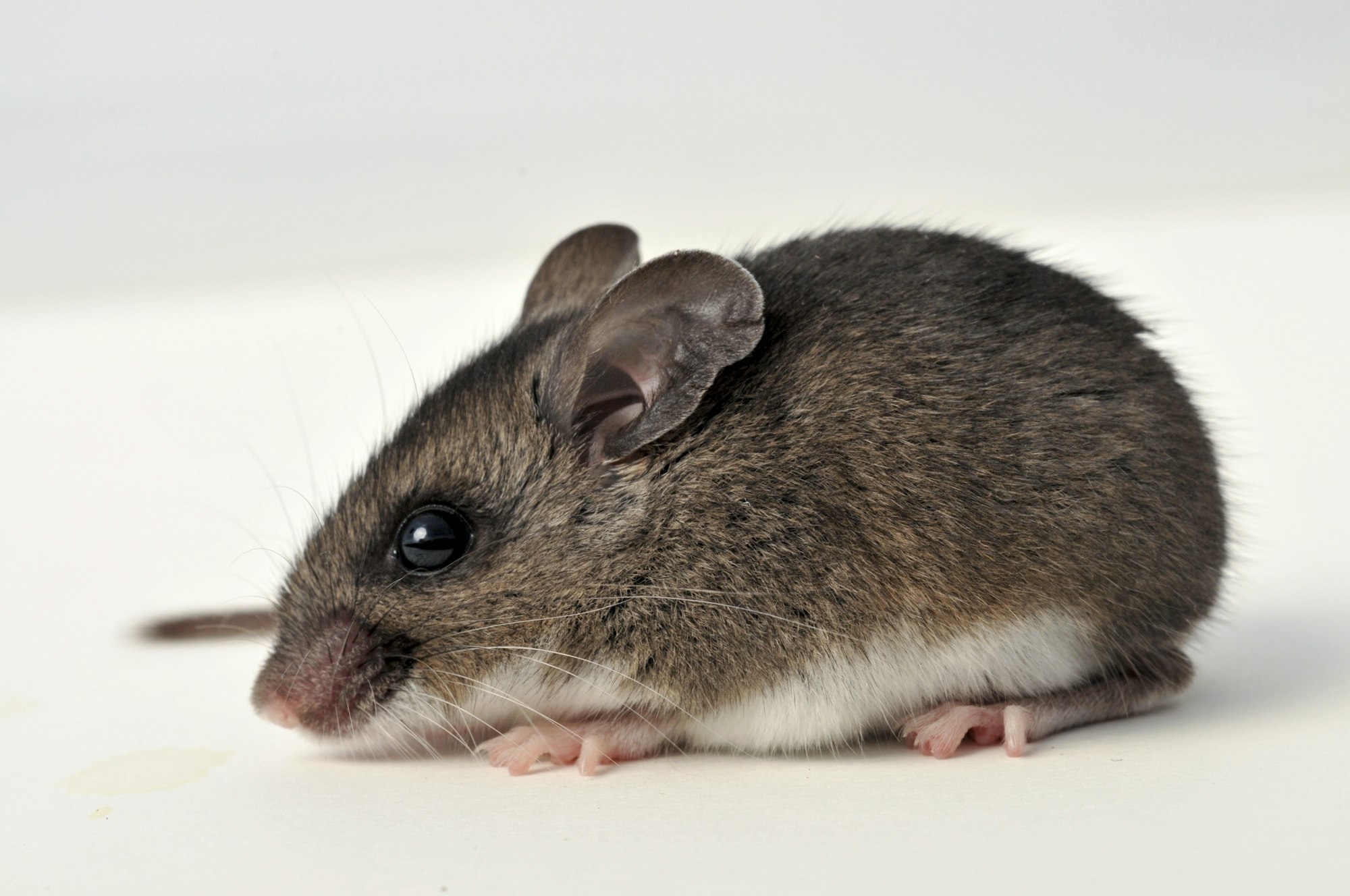Deer Mouse

The western deer mouse (Peromyscus maniculatus) is native to California and distributed throughout wooded areas from Alaska down to central Mexico.
Deer mice are a very similar size to house mice (2 to 3 inch long body with 2 to 3 inch long tail) but have broader faces, large eyes, and a striking white underbelly. They are grayish to reddish brown and the tail is also strongly white on the underside.
Deer mice are omnivores and eat a variety of plant matter and insects. They construct nests usually at the base of stumps, logs or brush piles but may infest vacant structures or seldom-used outbuildings. They may rarely infest occupied homes in rural areas.
Deer mice have 3-4 litters per year with an average of 4-6 pups per litter. Young deer mice are able to reproduce when about 7 weeks old. Most live less than 1 year in the wild. They are a staple prey item for many species.
There are many different species of wild mice; several species can be found in San Mateo County. Deer mice are the primary vector for hantavirus in western North America. Other species of wild mice may carry their own strains of hantavirus – most of which are not pathogenic to humans. All wild mice may cause food spoilage and damage to wiring or insulation of homes.
If you suspect deer mice have been inside your home or another structure, please follow safe cleanup guidelines.
Page last reviewed: August 24, 2021
